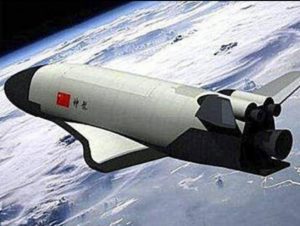Amid a flurry of orbital launches, a human suborbital flight and some short range ballistic missile flights over Taiwan, one mysterious launch – from the Jiuquan launch site in China took place at 0402 GMT on 4 August – still caught the attention of observers.
A Long March 2F/T (CZ-2F/T) rocket made its launch with the small unmanned CSSHQ-1 reusable spaceplane safely carried inside its fairing. The CSSHQ-1 reusable spaceplane, thought to be the equivalent of the US military X-37B/OTV spaceplane, is believed to be on its second flight. Little is known about the spacecraft, fuelling the belief that its main purpose is for reconnaissance use. At a reported weight of circa 8.5 metric tons, it is small for a spaceplane – though this is at the “large” end of the mass range for a spacecraft.
The first flight of the CSSHQ-1 spaceplane – it is presumed that there is only one flying to date – was launched in September 2020, similarly by a Long March 2F/T from Jiuquan in the Gobi Desert, Inner Mongolia. Its orbital spaceflight lasted two days before it re-entered and landed on 6 September. Its landing was confirmed but the launch site and landing time – suspected to be runway 05 at Lop Nor at 0200 GMT – were not. One interesting factor during the mission was that the “service module” element of the mission was undocked before the re-entry of the spaceplane to do its own mission as an individual spacecraft. It is not known if this will be repeated on the latest flight which is expected to last at least one month in orbit.
Another difference between the flights was the orbit achieved. Flight 1 went to a near circular 347 x 331 km orbit inclined at just over 50.2 degrees, while Flight 2’s orbit is a more elliptical 593 x 346 km orbit, again inclined by 50 degrees. This may have been planned, or it may have been due to an over-performance of the rocket on the second flight.







